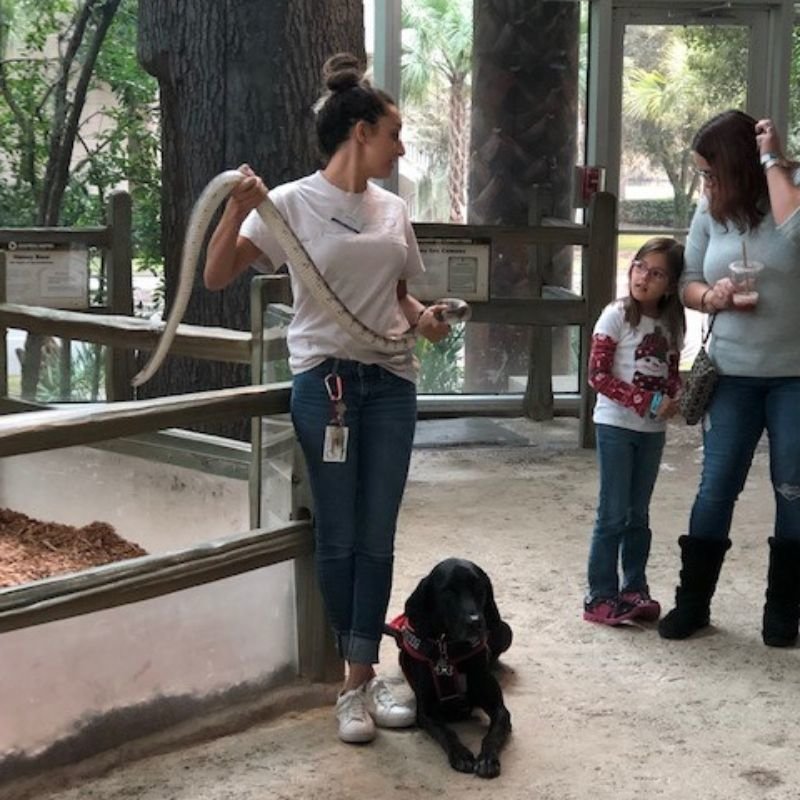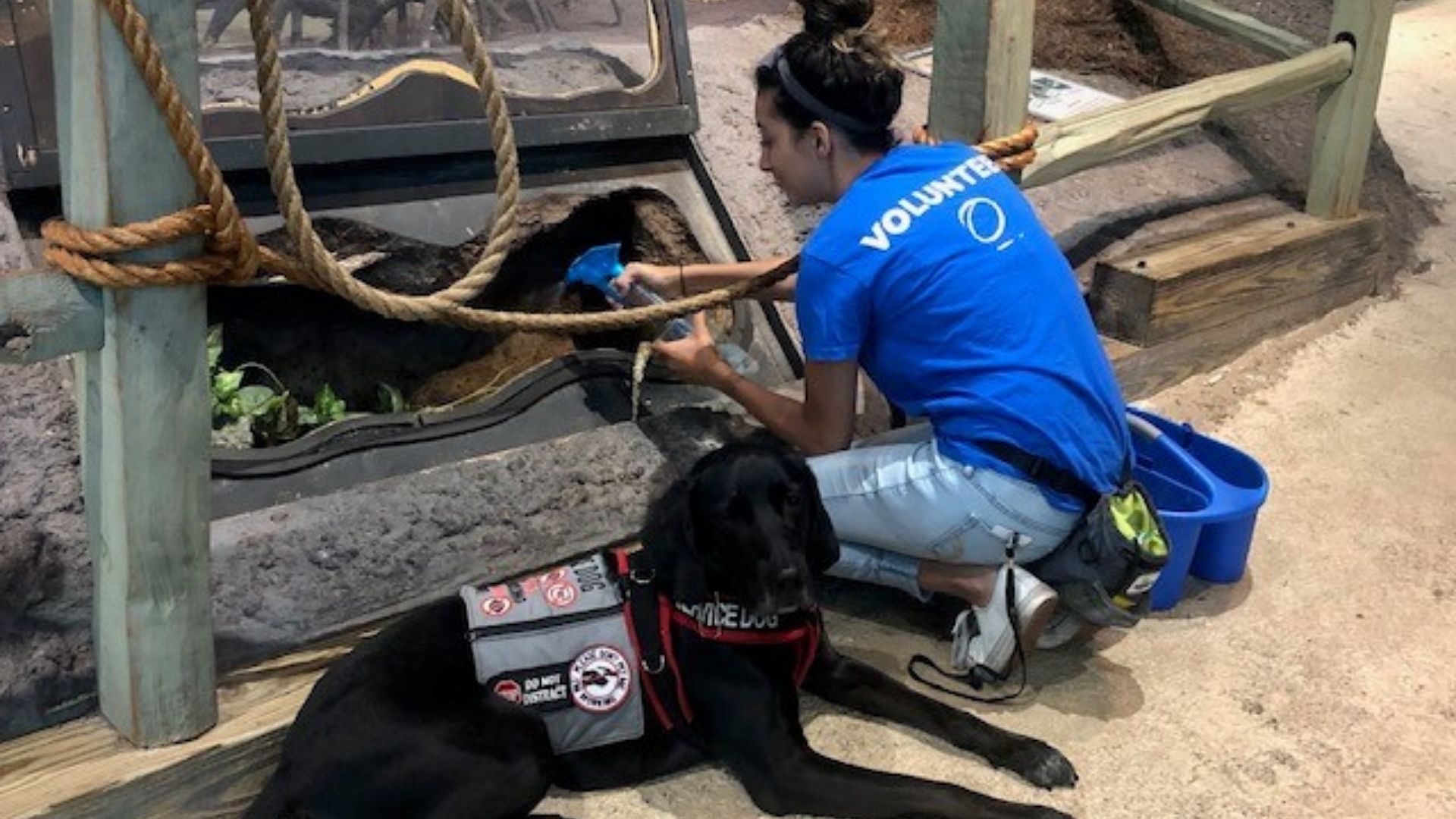Learn how service dogs can help people with disabilities breakdown barriers!
Have you ever seen a person using a service animal? Why do some people have animals that help them complete tasks?
When most people think of service animals, what probably comes to mind is a person who is blind using a seeing-eye dog, but there are a wide variety of disabilities and medical conditions where a service animal can be used to help people.
People who have disabilities sometimes use service animals, like dogs, to help them complete day-to-day tasks easily. Service dogs are specifically trained to help their owners complete tasks they would not be able to do independently; like open a door, bring them their car keys, and even guide a person who is blind across a street. Some dogs can detect when a person’s heart rate lowers, or when they are showing signs of anxiety from previous trauma. The dogs can alert their owners, and they can then take medications they need, prevent an anxiety attack, or get to a safe space away from people.
Service dogs are “tasked trained” meaning there is a specific task or behavior they have been trained to perform to help their owner. This is what separates them from just your average pet dog. Not every person with a disability needs a service dog, but some people can’t imagine trying to live their life without one!
Sierra Middleton was an animal care intern at Orlando Science Center where she helped to clean enclosures, walk animals outdoors, provide a science learning experience for guests, performed water chemistry testing, and learned how to train exotic animals, accompanied by her loyal service dog, Duke.
To me, Duke is more than just my service dog - he’s my lifeline in a lot of ways. He means an increased quality of life; helping me with things every day as simple as picking up my dropped phone to as great as alerting me to an impending medical episode.
The many ways I have trained him to help mitigate my disabilities have certainly helped me in more ways than I can count, but in all honesty it was the mere existence of his unconditional love that acted as a light at the end of a long, dark tunnel.

The Americans with Disabilities Act (ADA) was signed into law on July 26, 1990, by President George H.W. Bush. The ADA is one of America's most comprehensive pieces of civil rights legislation that prohibits discrimination and guarantees that people with disabilities have the same opportunities as everyone else to participate in the mainstream of American life -- to enjoy employment opportunities, to purchase goods and services, and to participate in State and local government programs and services.
Learn More!
- Check out some of the answers to frequently asked questions.
- Learn how service animals are making STEM professions more accessible than ever.
